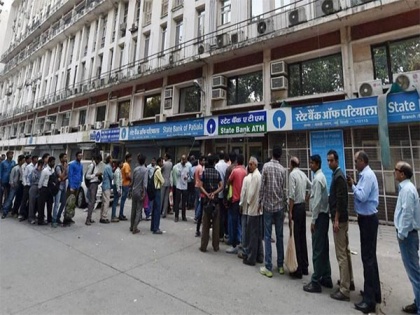2016 Demonetisation: "Can examine the manner in which decision was taken," says SC
By ANI | Updated: December 6, 2022 23:40 IST2022-12-06T18:08:35+5:302022-12-06T23:40:02+5:30
The Supreme Court on Tuesday said that it has the power to examine the manner in which the decision ...

2016 Demonetisation: "Can examine the manner in which decision was taken," says SC
The Supreme Court on Tuesday said that it has the power to examine the manner in which the decision for demonetisation was taken adding that the judiciary cannot fold its hands and sit just because it is an economic policy decision.
The court's remarks came when the Reserve Bank of India (RBI) counsel made the submission that judicial review cannot apply to economic policy decisions.
A five-judge bench of Justices Abdul Nazeer, BR Gavai, AS Bopanna, V Ramasubramanian and BV Nagarathna was hearing petitions challenging the Centre's decision to demonetize currency notes of Rs 500 and Rs 1,000 in 2016.
During the hearing, senior Advocate Jaideep Gupta, appearing for the RBI apprised the court about the objective of the demonetisation policy to curb black money and fake currencies.
Senior Advocate Gupta, who has justified the 2016 demonetisation policy, said that the proportionality principle should be applied to the extent of testing whether there is a reasonable nexus between stated objectives and demonetisation.
Defending the demonetisation, Advocate Gupta submitted that judicial review cannot be applied to economic policy decisions.
Justice BV Nagarathna clarified that the court will not go into the merit of the decision but it can examine into the manner in which a decision was taken.
"Just because it is an economic policy decision, the court cannot fold its hands and sit," Justice BV Nagarathna said.
The court further remarked that government has wisdom and ought to know what is best for the people. But, the court can look into procedures and aspects related to decisions.
In a hearing that went on for nearly five hours, the court also took into account of the labourers and household help, who were paid Rs 500 and Rs 1,000 currency notes and had to stand in long queues at the bank.
RBI lawyer appraised the court that ample opportunities were given to people to exchange their notes.
Senior Advocate Gupta, who argued for a length today, opposed the petitions and said that the petitioners have not established any legal grounds that relevant factors have not been considered and irrelevant factors have been taken into account.
Attorney General R Venkatramani said that the economic policy of demonetisation was connected to social policy where three evils are attempted to be addressed.
RBI, which was also represented by Advocate on Record HS Parihar and Advocate Kuldeep Parihar and Ikshita Parihar, in an additional affidavit has said that in compliance with the provisions of section 26 of RBI Act read with the Reserve Bank of India General Regulations, 1949, the meeting of the Central Board of the RBI was held on 8th November 2016 and after detailed deliberations, the Board concluded that in larger public interest, the balance of advantage would lie in withdrawal of legal tender status of Rs 500 and Rs 1000 currency notes currently in circulation and passed the resolution.
After the resolution was passed, the same was communicated to the central government on November 8, 2016, RBI said in its affidavit.
Section 26(2) in The Reserve Bank of India Act, deals with the recommendation of the Central Board the 2[Central Government] may, by notification in the Gazette of India, declare that, with effect from such date as may be specified in the notification, any series of bank notes of any denomination shall cease to be legal tender 3[save at such office or agency of the Bank and to such extent as may be specified in the notification].
Appearing for the petitioner, Senior Advocate Chidambaram raised the point parliamentarians would have stopped the policy but they did not follow the legislative route.
( With inputs from ANI )
Disclaimer: This post has been auto-published from an agency feed without any modifications to the text and has not been reviewed by an editor
Open in app